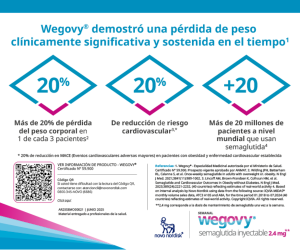Insulin resistance and thyroid: a reciprocal relationship
Keywords:
insulin resistance, thyroidAbstract
It is widely recognized that thyroid hormones regulate basal metabolism, increase oxygen consumption in most tissues, and have permissive actions by increasing tissue sensitivity to catecholamines, promoting lipolysis, glycogenolysis, and gluconeogenesis1. In particular, thyroid hormones have a marked effect on glucose metabolism.
In the liver, an antagonistic effect of insulin prevails with increased glycogenolysis and gluconeogenesis, which increases hepatic glucose output. At the level of peripheral tissues, on the other hand, its action is insulin-like, promoting glucose uptake. In this way, a balance is achieved that is usually broken when thyroid function is altered. For example, if a diabetic patient becomes hyperthyroid, a decompensation of his glycemic control is usually observed as a result of the centrally derived insulin resistance generated by excess thyroid hormones. On the other hand, in hypothyroidism, peripheral insulin resistance predominates due to the reduced expression of glucose carriers, but glycemia does not increase because hepatic glucose output is also reduced2. Hypothyroidism is the most common thyroid dysfunction, especially in women and older adults. However, another population in which it is usually present is those patients with metabolic syndrome and diabetes. Even diabetic complications are more frequent in diabetic patients with hypothyroidism. However, it is not entirely clear whether, due to the mechanisms of metabolic disruption, hypothyroidism has a causal relationship with diabetes. Some longitudinal studies seem to indicate that higher TSH levels and lower free T4 levels are associated with a higher incidence of diabetes, but the literature results are not unanimous3. On the other hand, it has been suggested that the relationship between hydrocarbon metabolism and thyroid glandular function is reciprocal, since both systems can interact, triggering thyroid dysfunction and thyroid cancer in patients with insulin resistance and metabolic syndrome4. Older adults are the population most affected by these endocrine-metabolic changes, in which both hypothyroidism and insulin-resistance-related states are more prevalent. Thus, the presence of both pathologies must be investigated at this stage of life.
References
I. Mullur R, Liu YY, Brent GA. Thyroid hormone regulation of metabolism. Physiol Rev 2014;94(2):355-82. doi:10.1152/physrev.00030.2013.
II. Brenta G. Why can insulin resistance be a natural consequence of thyroid dysfunction? J Thyroid Res 2011;2011:152850. doi:10.4061/2011/152850.
III. Brenta G, Caballero AS, Nunes MT. Case finding for hypothyroidism should include type 2 diabetes and metabolic syndrome patients. A Latin American Thyroid Society (Lats) Position Statement. Endocr Pract 2019;25(1):101-105. doi:10.4158/EP-2018-0317.
IV. Brenta G, Di Fermo F. Thyroid cancer and insulin resistance. Rev Endocr Metab Disord 2024;25(1):19-34. doi:10.1007/s11154-023-09849-7.
Downloads
Published
Issue
Section
License
Copyright (c) 2024 on behalf of the authors. Reproduction rights: Argentine Society of Diabetes

This work is licensed under a Creative Commons Attribution-NonCommercial-NoDerivatives 4.0 International License.
Dirección Nacional de Derecho de Autor, Exp. N° 5.333.129. Instituto Nacional de la Propiedad Industrial, Marca «Revista de la Sociedad Argentina de Diabetes - Asociación Civil» N° de concesión 2.605.405 y N° de disposición 1.404/13.
La Revista de la SAD está licenciada bajo Licencia Creative Commons Atribución – No Comercial – Sin Obra Derivada 4.0 Internacional.
Por otra parte, la Revista SAD permite que los autores mantengan los derechos de autor sin restricciones.




























